ASUS Transformer Book Lineup Bolstered With T100HA and TP200SA Models
by Brett Howse on September 22, 2015 9:00 AM EST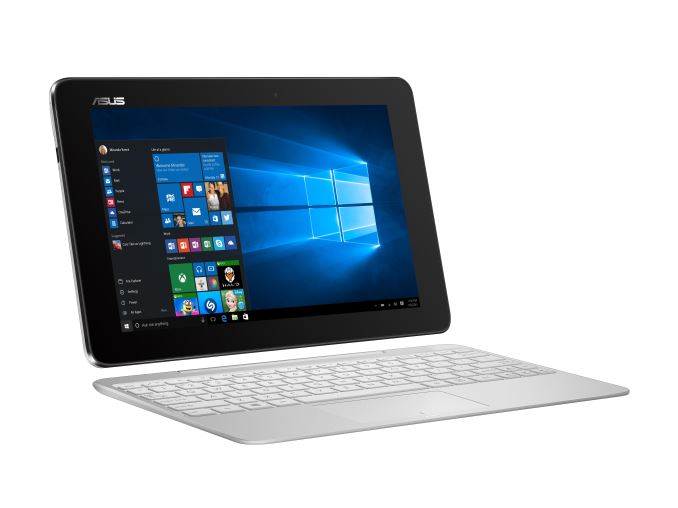
ASUS has been quite successful at trying to carve out a place in the tech sector by packing more into their lineup than the competitors. We saw that clearly with the ASUS Zenbook UX305 Notebook, which offers much more storage and RAM than pretty much any other notebook in its price range, and doesn’t skimp on the form factor either. In the smartphone space, they also offer an impressive 4 GB of memory and 64 GB of storage in the ASUS ZenFone 2, and at a price that is pretty impressive. Back in 2013, Anand took a look at the ASUS Transformer Book lineup with the original T100. It was not perfect, but it certainly set a new bar for what to expect for what used to be netbook level pricing.
Today ASUS is at it again. The T100HA is the next generation of the original Transformer Book, and this time comes with Intel’s Atom x5, with the detachable keyboard that defines the T100 series. The TP200SA is a convertible notebook with a 360° hinge allowing it to be used as a tablet as well.
| ASUS Transformer Book | ||
| T100HA | TP200SA | |
| Processor | Intel Atom x5-Z8500 1.44-2.24 GHz quad-core 14nm 2W SDP |
Intel Celeron N3050 1.6-2.16 GHz dual-core 14nm 4W SDP 6W TDP |
| Memory | 4GB | |
| GPU | Intel HD Graphics Gen 8 | |
| Display | 10.1" 1280x800 IPS with touch | 11.6" 1366x768 IPS with touch |
| Storage | 64 GB eMMC | |
| I/O | 1 x micro USB 1 x micro HDMI 1 x micro SD 1 x Type-C USB 3.0 Keyboard Dock 1 x USB 2.0 |
1 x micro HDMI 1 x micro SD 1 x Type-C USB 3.0 1 x USB 2.0 1 x USB 3.0 |
| Dimensions | (mm) : 265 x 175 x 8.38 plus 7.11-9.91 for dock (inches) : 10.43" x 6.89" x 0.33" plus 0.28-0.39 for dock |
(mm) : 297 x 201 x 18.54 (inches) : 11.68" x 7.93" x 0.73" |
| Weight | Tablet: 580 g / 1.28 lbs Dock: 471 g / 1.04 lbs |
1.20 kg / 2.65 lbs |
| Battery | Up to 12 hours | Up to 8 hours |
| Price | $299 | $349 |
The T100HA moves to Intel’s Cherry Trail Atom lineup which is the new 14 nm version of Atom. We first saw the x7 version of this in the Microsoft Surface 3, and ASUS is going with the quad-core x5-Z8500 model. The four cores have a base frequency of 1.44 GHz and a burst frequency of 2.24 GHz. The Scenario Design Power of this SoC is slightly lower than its x7 brother at just two watts. Graphics are Intel’s Gen 8 graphics with 12 execution units, and a frequency range of 200 to 600 MHz. This should be a pretty nice bump in performance over the outgoing Bay Trail model, and the 14 nm Atom should also increase battery life. ASUS claims that T100 can now get up to 12 hours on a single charge.
The tablet features an IPS display, and here it drops a bit of resolution over the old model but it also moves from a 16:9 to 16:10 aspect ratio, with the new model featuring a 1280x800 resolution. ASUS has also redesigned the keyboard dock, and the tablet now locks in with the help of neodymium magnets.
But I think where ASUS shows its strengths is the available storage and RAM, with the new model offering 4 GB of RAM and 64 GB of eMMC storage as the only option. For the price of $299, the 10.1-inch tablet offers quite a bit of versatility and performance, and as is always the case with the Transformer Book lineup, the price also includes the detachable keyboard. Impressive stuff. The 1.28 lb tablet also features micro USB, micro HDMI, micro SD, and a USB Type-C port, albeit with just USB 3.0 speeds available, along with another USB 2.0 port on the keyboard dock.
For those that would prefer a more traditional notebook, ASUS offers the Transformer Book Flip T200SA. At 11.6 inches, it’s certainly a small notebook, but it also packs a lot in for a low cost notebook. The display is an IPS panel as well, which needs to be called out only because notebooks in this price range generally still ship with TN panels. The TP200SA features Intel’s Braswell SoC, with the Celeron N3050. This is also based on the same Airmont cores as Cherry Trail, but in this case it is just two cores, from 1.6 to 2.16 GHz, but with a TDP up to 6 watts which should let the two cores stretch their legs. The graphics is also Intel Gen 8 with 12 EUs and 320-600 MHz available. Once again, ASUS is outfitting this model with 4 GB of RAM and 64 GB of storage, which is a nice baseline offering to have. The 2.65 lb notebook also features micro HDMI, Micro SD, USB Type-C 3.0, and two full sized USB ports with one at 2.0 speeds and another at 3.0 speeds. The notebook will come in a dark blue color scheme and will be sold for $349.
We’ve seen some pretty impressive low cost offerings in the last while, but ASUS has stepped up their game and are outfitting these models with enough storage and RAM to not make them feel overly strained. 32 GB on Windows 10 is doable, but space management becomes an issue fairly quickly despite the changes to how the OS uses that space. Even low cost tablets generally come with IPS panels, including the outgoing T100 model, but the TP200SA being outfitted with IPS at this price is very nice to see.
ASUS will begin selling both models later in the month.
Source: ASUS


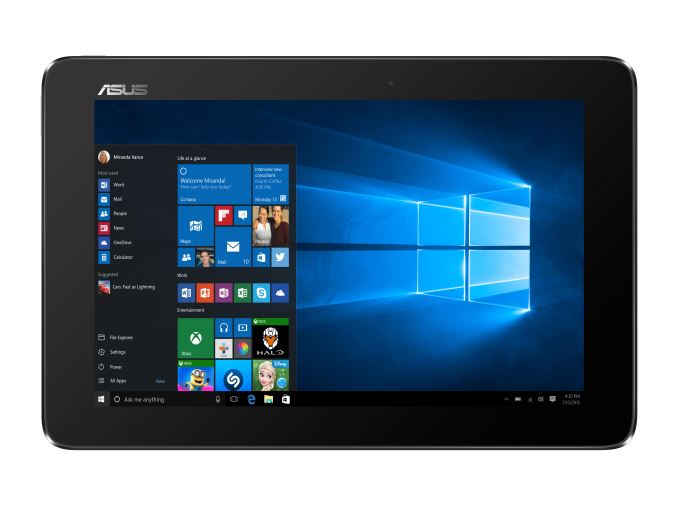
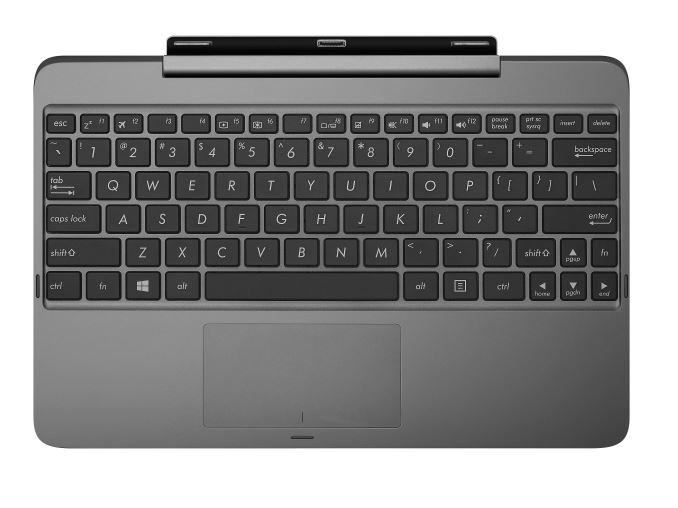
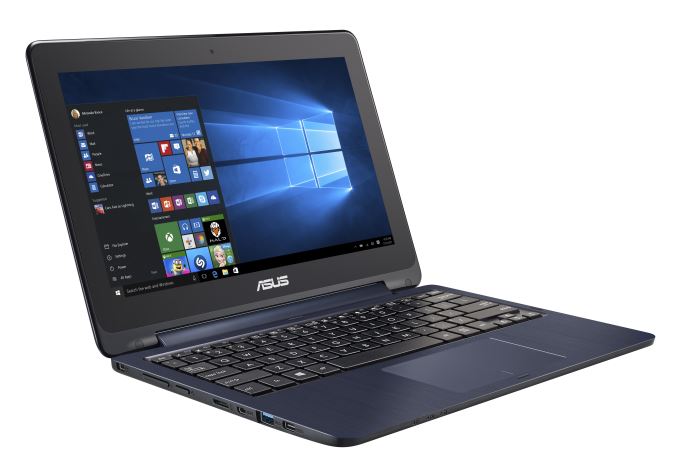
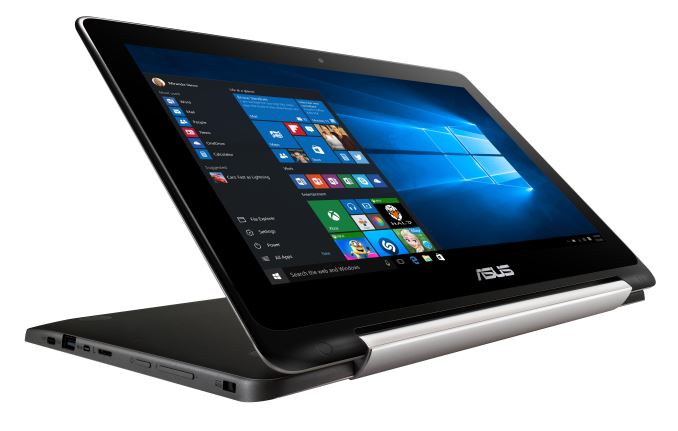








31 Comments
View All Comments
vladx - Tuesday, September 22, 2015 - link
Dude, he's obviously a troll spreading FUD for newbies.speculatrix - Wednesday, September 23, 2015 - link
I have a Toshiba Click Mini with Baytrail 3735, 2GB ram, 32GB eMMC. Works plenty fast enough, streams netflix nicely and the S-IPS 1920x1200 display is pretty good. Very good device for the price.vladx - Tuesday, September 22, 2015 - link
What a trollketacdx - Tuesday, September 22, 2015 - link
I had the Bay Trail model and it wasn't bad. I ended up returning it to go for a Zenbook UX303LN instead ( I know a big price jump but quality over price) . The issues I found with the previous model was that two different models i bought and returned, had stuck pixels on day 1, the screen didn't get very bright, EMMC is ssslllooowww but otherwise, the processor is actually pretty decent. Atom has finally gotten pretty cool. You won't be gaming on it but it can run other tasks quit smoothly. This chipset with a small SSD and a 1080P screen would actually hit a nice spot but since they are always aimed to cheap devices, isn't common. In retrospect, I guess the new Surface 3 pretty much hits those specs though...azazel1024 - Tuesday, September 22, 2015 - link
Problem with the Surface 3 is it is extremely expensive, even for what you get and the eMMC in it is painfully slow even compared to most other eMMC on the market. Include the type cover with the base price and at least double up on the eMMC performance and MS would have my interest, but for the 4GB of RAM version and type cover it tips the scales at over $700...that is just too much to me for a convertible or tablet. $600 might be steep, but I'd at least consider it. $500 to me is the sweet spot.metayoshi - Tuesday, September 22, 2015 - link
I'm a proud owner of the Surface 3, and while I do love it and use it more often than my actual laptop now, I do agree that its two weaknesses are the eMMC NAND and the steep price. I personally went in for the keyboard, and I also bought the Surface Pen, but I ended up not using the Pen as much as I thought I would, so I definitely wasted some money there. The NAND speed definitely leaves a lot to be desired as I'm used to full fledged SSDs and even a normal HDD in this day and age flies faster than the eMMC solution used in the Surface.In the end though, it was a big step up from the Acer Iconia W4 (Bay Trail) that I had. Other than the NAND, I do feel it was worth the money that I spent. It has a great screen, more than good enough performance for day to day tasks, and it lasts forever on a single charge. Of course, paying less would have been desirable, but right now, the quality of the Surface 3 can't be beat by these other Cherry Trail 2-in-1s that OEMs are now putting out. Granted, the OEMs are aiming at a much lower price point, but with that, there are obvious sacrifices: ASUS's new T100HA, for example, with 64 GB storage only, 1280x800 instead of the 1920x1280 of the Surface 3, and using the slightly weaker Atom x5 instead of the x7. For the Surface 3, if I could pay $50 more for a full blown 128 GB SSD like in the Surface Pro 3 and Core M tablets that popped up earlier this year, I would jump on that right away, but I wasn't going to spend $200 more for a Surface Pro when the only thing missing was faster storage. I was actually really close to picking a Dell Venue 11 Pro 7140 (Core M), but the price difference for a device I wasn't really going to be using for power hungry tasks was not worth it. And here I am with my Surface 3. Probably not the best choice, but it was definitely one that I'm satisfied with.
azazel1024 - Wednesday, September 23, 2015 - link
I keep waiting for Asus to come out with a premium Cherry Trail 2-in-1. I almost wonder if it is seemingly delayed because they released the T100 Chi, the premium bay trail 2-in-1 rather late, in May I think was it's first actual availability. I'd really like to see what they can do with Cherry Trail in it (and preferably 802.11ac finally). The T100 Chi is a rather nice step up from the T100 in most ways. The T100 eMMC (originally T100) was pretty decent for eMMC and the T100 Chi's eMMC is easily twice as fast in most respects (well over 2x as fast as the Surface 3 in sequential write, about 3x as fast in random read and write and about 1.5x faster in sequential read speeds).So if Asus could just take the T100 Chi, offer it with the X7 processor, 4GB of RAM and swap the micro USB3 port with a USB-c type port and 802.11ac wifi and call it a day, it would be pretty much perfect.
stephenbrooks - Tuesday, September 22, 2015 - link
I own a T100TA-C1-GR and use it as my main laptop whenever I'm not at a workstation, for most work it's just fine. I wish there was a UK keyboard available though. Also I managed to crack the touchscreen (need to repair that), so the build quality on the screen part isn't perfect - there's a lot of flex if it gets any twisting force and you can crack it by chucking it in a bag too carelessly.stephenbrooks - Tuesday, September 22, 2015 - link
...but the ~8 hour battery life, tiny 10" size and touchscreen is amazing for $299. The other disadvantage to watch out for is that mouse trackpad doesn't have separated buttons. There are clickable areas but they rely on bending the whole plastic surface, which feels odd. So you should be happy with using the touchscreen or trackpad tapping to use this. I see the new model still has the clickable areas part of the plastic pad and not separate unfortunately.zodiacfml - Wednesday, September 23, 2015 - link
finally,decent RAM on these types. unfortunately, i went to a traditional 15.6 just to get that i5-5200u for cheap.